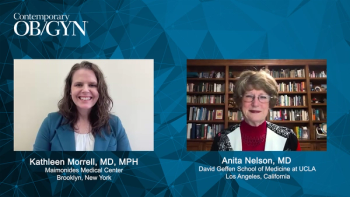
Panelists discuss how breakthrough bleeding affects approximately 20% of users initially but improves over time and can be managed through patient education about expectations, nonsteroidal anti-inflammatory drugs (NSAIDs) for acute episodes, and adjustments to estrogen dose or progestin type when necessary.








